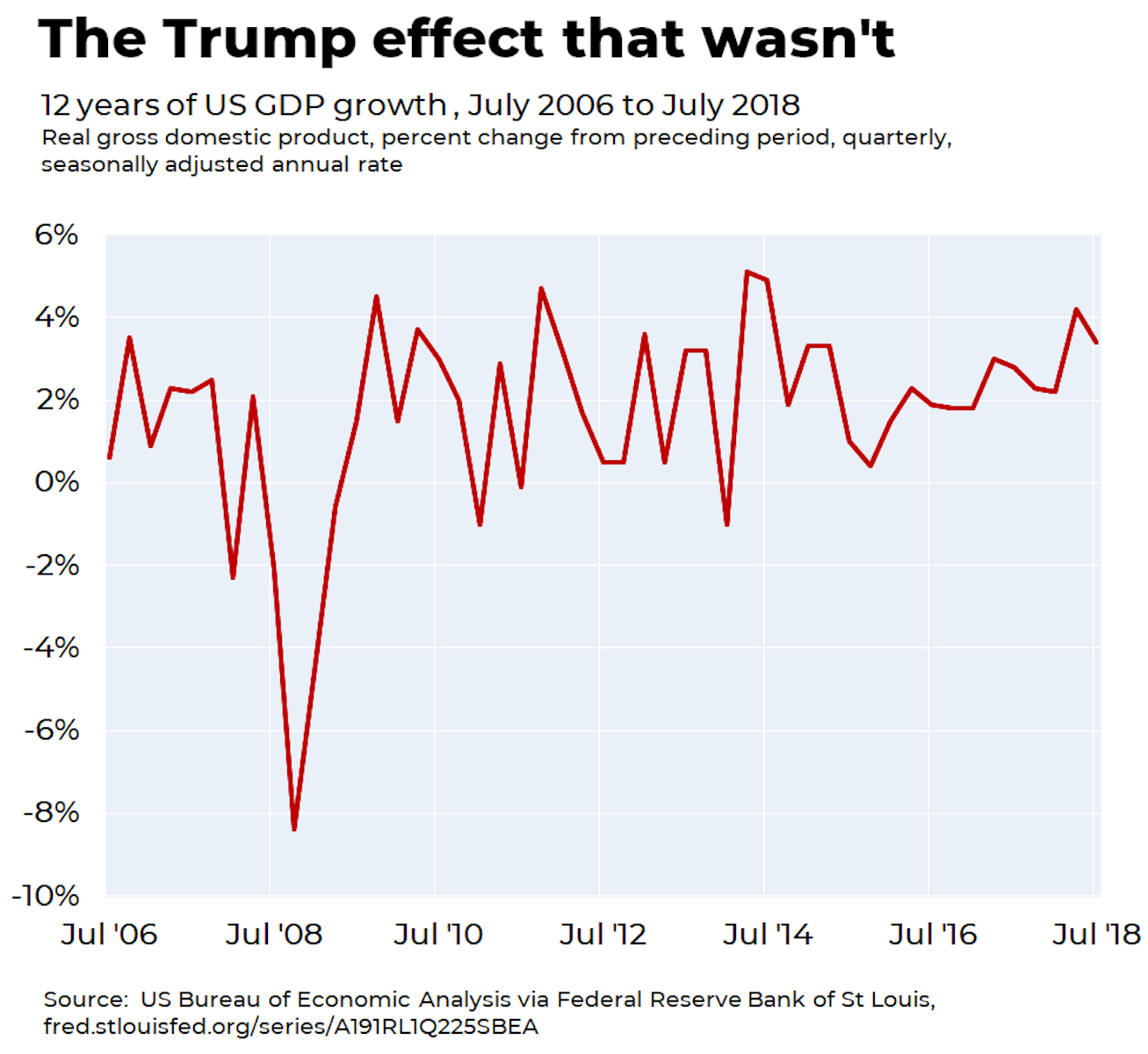Happy two-year anniversary, President Donald Trump. It was on 20 January 2017 that the successful reality TV star, millionaire property developer, and son of a millionaire property developer was elected president.
And the past two years has been a fascinating experience for anyone interested in this question: how much does government actually affect the short-term advance of a modern economy?
Now the answer is in. And President Trump’s first two years make a compelling case that in the short term, economic leadership matters barely at all.
The perfect experiment
Trump is the perfect lab subject for gathering data on this topic. He has been, by most yardsticks, a terrible economic leader: ill-informed, barely teachable, easily distracted, prone to hire fools and con artists. The depth of his flaws has been pointed out by conservative critics as well as left-wing ones.
“It’s like we elected the guy at the end of the bar to be president,” says the MSNBC journalist Chris Hayes, “and now we’re all stuck in the bar with him.”
But I’m not an American, so most of this means little to me as long as Trump can keep his tiny fingers off the nuclear button. The US economy is now a smaller piece of the global economy than it has been in many decades; when it cratered in 2008, the Australian economy stayed out of recession.
So let’s focus on the economic results of replacing an economically competent leader with one who is, well, apt to misspell GDP in a late-night tweet. What happens when you start a trade war with China? When you remove a widely admired Federal Reserve governor, Janet Yellen, and then start loudly criticising her replacement? When you sign a tax bill that reduces corporate taxes only at the expense of a massive increase in the already worryingly high US government deficit?
Does that all, as the economist Paul Krugman warned in late 2016, undo the recovery from the global financial crisis and plunge the world into recession? In the short term, does it matter, as former Australian prime minister Paul Keating used to say, whose hands are on the economic levers?
The unremarkable short term…
Apparently, it doesn’t matter at all.
Take a look at the chart, which covers the US economy’s past 12 years.

The Trump era starts about 90% of the way across the graph, in January 2017. But without the years marked, you’d be hard-pressed to tell when Obama’s rule ended and Trump’s began.
The US economy has simply continued to grow. It may have been helped in mid-2018 by a fiscal stimulus from tax cuts and new spending, estimated at as much as 1.4%, but even that’s hard to know for sure.
The result of continued growth is that Trump has attained several of his economic targets. Manufacturing jobs are up, as they have been ever since 2010. US carbon emissions have kept falling, partly due to continued job losses in heavy industry.
It’s amazing, in a way, how little such a change of government has affected the world’s largest economy.
Waiting for the long term
In the long term, there’s still little doubt that enough bad economic decision-making can help to change an economy. The worst economic decisions under Trump – a new explosion of US debt from that fiscal stimulus, and a shift to protectionism – are odds-on to hurt the US economy, eventually.
But until that happens, Trump presents a different lesson. When you hear politicians, their supporters, or their media boosters talking with great certainty about the short-term outcomes of their opponents’ economic policies, just ignore them. They simply don’t know what they’re talking about.
If Trump’s first two years show anything, it’s that a complete change of economic leadership may bring no short-term change at all in a national economy.







